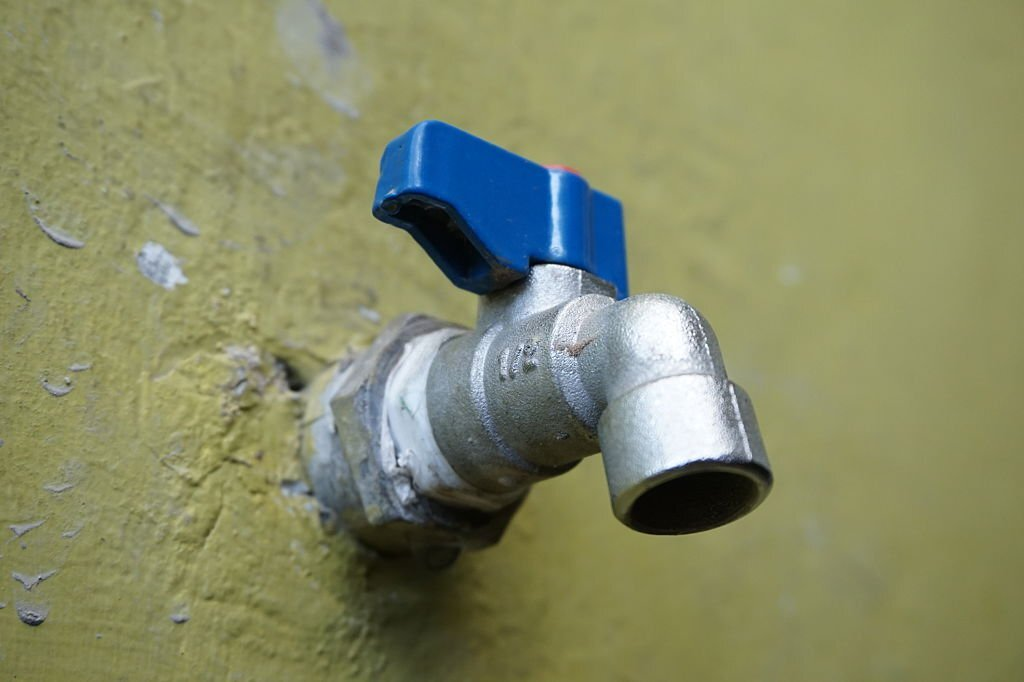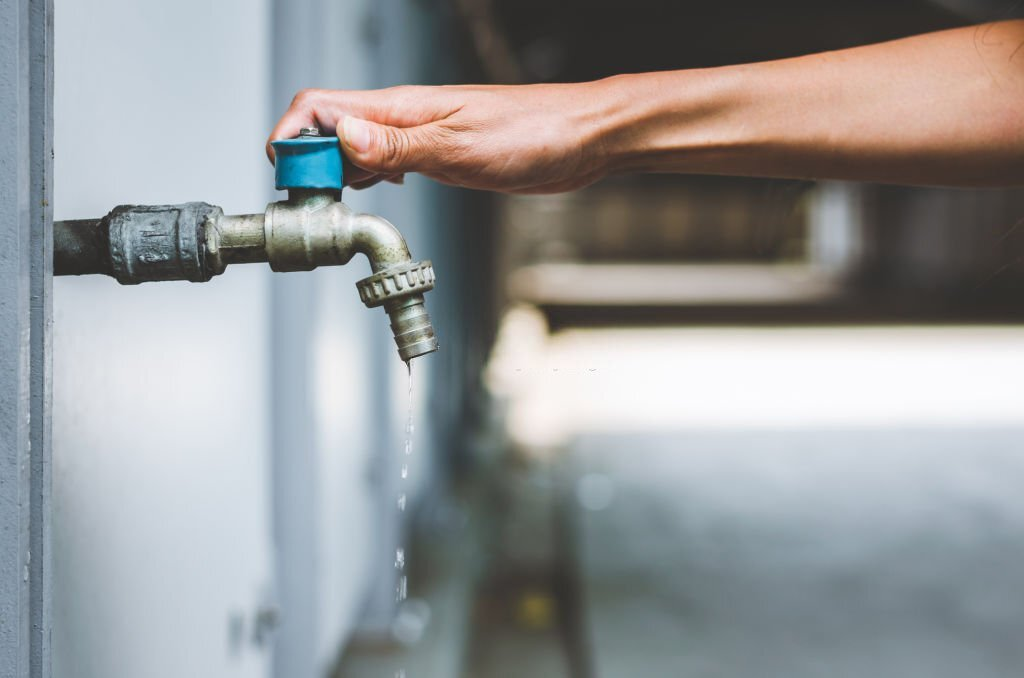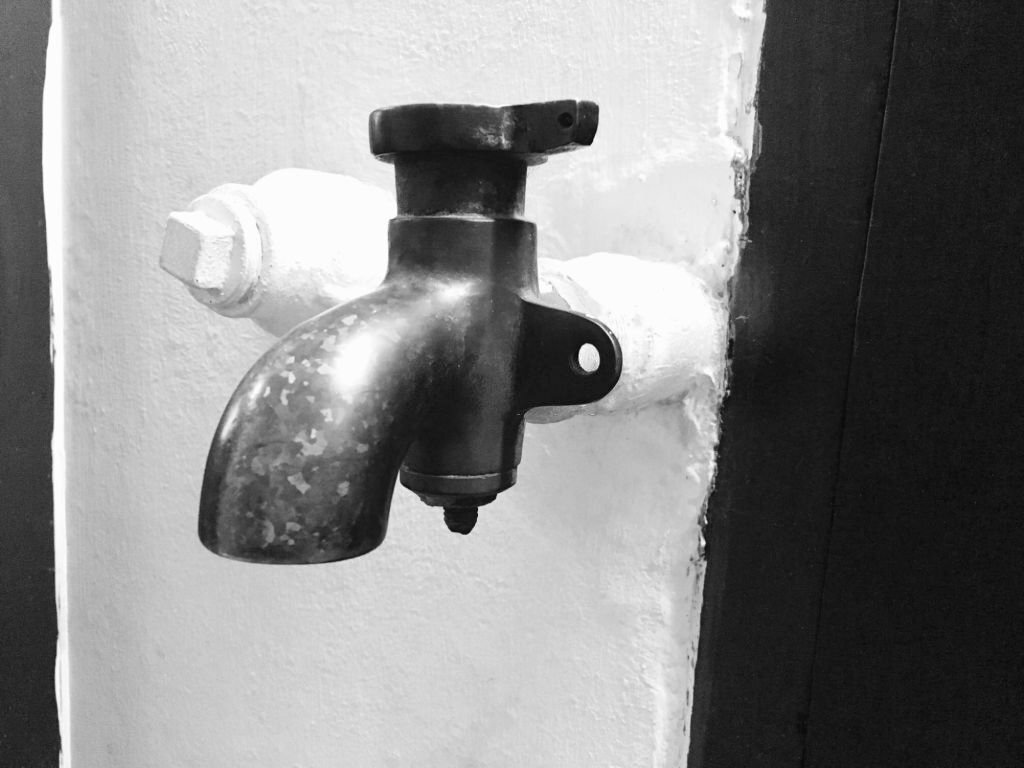A hose bibb is an important water fixture in homes. But what is it anyway? What are its functions, and should you install one in your residence? Learn the answers to these questions in this post.
Hose Bibb Meaning

Image Source: iStockPhoto
A hose bibb is a valve that is installed outside of a home or building that allows a user to connect a hose to the building’s water supply. This connection point is usually located near an exterior faucet or spigot.
Hose bibbs are commonly used in water gardens or wash vehicles. Other hose bibbs have a backflow preventer device installed to protect the building’s water supply from contamination.
Hose Bib or Bibb: Which Is Correct?
If you’re a stickler for proper grammar, you may have noticed that the spelling of “hose bib” is often debated. Is it “hose bib” or “hose bibb”? While both spellings are technically correct, “hose bib” is the preferred spelling according to most style guides. But hose bibb is also an acceptable alternative.
Why Is It Called a Hose Bib?
In the context of plumbing, a bib is a type of faucet that has a nozzle bending downward. Occasionally, it is also called bibcock.
What Is a Hose Bib Used For
A hose bib is a faucet that is designed to be used with a hose. Most homes have at least one hose bib; they are often located in the backyard or next to the garden hose.
The hose bib provides a convenient way to water plants or wash the car without having to go inside the house.
Is Hose Bibb a Faucet?
Yes. A hose bibb is considered a type of faucet. But technically, it is a valve where you connect a garden hose to your home’s plumbing system. A hose bibb shut-off valve may exist inside homes, but not all bibbs have it.
What Type of Valve Is a Hose Bibb?
A hose bibb is a type of ball valve. What does a ball valve do? The latter type of valve that controls the flow of fluids and gasses. Hose bibb ball valve is a quarter-turn valve; it only needs to be turned a quarter of a turn to open or close it.
What Does Hose Bibb Mean in Plumbing?
As one kind of shut off valves, hose bibb in plumbing refers to those faucets that have downward nozzles. Within the industry, there’s a consensus that these bibbs are external valves to which hoses can be attached.
Hose Bib vs Ball Valve
There’s a difference between Silcock-type hose bibs and ball-valve-type hose bibs. Basically, a Silcock design lets you turn the bib’s handle the same way you are turning a bolt.
Meanwhile, hose bibs that ball valves will only require a quarter of a turn for on and off. That’s why they are also called “3/4 hose bibs” and they are used outside your home.
Can You Use a Ball Valve for Garden Hose?
The answer to this question is a yes. However, there are some things to consider before doing so.
For instance, they are not designed for high-pressure applications. If you are using one for a garden hose, be sure to check the pressure rating first. A ball valve may also restrict the water flow, especially if the hole of the ball is smaller than the pipe’s bore.
Different Types of Outside Faucets
Contrary to popular belief, there are multiple types of outdoor faucets. The variations are usually in the aspect of their design, functionality, and price. Numerous faucets can actually satisfy the needs of different homeowners, such as the ones listed below:
- Ball valve faucets
- Spigot faucets
- Hose bib faucets
- Outdoor kitchen faucets
- Outdoor shower faucets
- Anti-siphon faucets
- Frost-proof outdoor faucet
- Anti-siphon faucet
Spigot vs. Hose Bib

Image Source: iStockPhoto
A spigot and a hose bib technically refer to the same thing. They are mechanisms that control water flow outside your home.
But in some cases, people refer to spigots as outdoor valves connected to pipes, while hose bibs as valves attached to small hoses.
Silcock vs Hose Bibb

Image Source: iStockPhoto
Similar to spigots, a silcock can be used interchangeably with hose bibs. In the plumbing industry, these two may refer to the same thing.
However, valves called silcock have certain nuances. Compared to standard hose bibs, a silcock comes with a longer pipe. It’s also suitable for cold areas due to its rugged construction. They can make water resistant to freezing.
Is a Ball Valve Better Than a Gate Valve?
In many industries, there is often a debate as to whether a ball valve or a gate valve is better. The truth here is that each of these valves excels in different functions.
Gate valves can be used to completely start or shut the flow of water through the pipe. Unlike ball valves, gate valves aren’t used for regulating water flow. Hence, they are not suitable for applications that involve high-frequency water usage. The latter is the job of a ball valve. Additionally, ball valves are significantly cheaper than gate valves.
Wall Hydrant vs Hose Bibb
A wall hydrant is a type of valve that protects water from freezing. While they can be used interchangeably with hose bibbs, wall hydrants are more rugged and often used in both commercial and residential structures. It shuts the water inside the building so that it won’t freeze.
Are All Outdoor Faucets the Same Size
Outdoor faucets don’t have too many variations when it comes to their size. They usually come in either 3/4-inch or 1/2-inch in diameter. The reason for this uniformity is simple: these outdoor faucets need to match the plumbing system of homes and buildings. If the water lines in your home are 3/4 inches, it’s likely that the outdoor faucet has the same diameter, as well.
How to Measure Outdoor Faucet Size
It’s easy to know the size of your outdoor faucet. Just follow the process below:
- Get a tape measure. Use it to get the measurement of the inside diameter.
- To do this, place the measuring tape on the mouth of the connector.
- Next, measure the inside wall from one side until you reach the opposite side.
Sometimes, outdoor faucet manufacturers embed the size of the faucets on their bodies. You will usually see the “3/4” or “1/2” marks.
1/2 vs 3 /4 Hose Bib: Which Is Standard Hose Bib?
As mentioned, outdoor faucets either come in 1/2-inch or 3/4-inch diameters. Both of these are standards in the plumbing industry. However, their respective size may affect different settings.
When it comes to water pressure, 3/4-inch faucets are better than their counterparts. After all, 3/4-inch pipes produce more water pressure, which, in turn, allows greater water flow.
Of course, you can’t force a 1/4 turn ball valve hose bib to fit a 3/4 pipe. Here, you would need a 3/4 ball valve hose bib. Eventually, your choice here depends on the existing plumbing system of your home. Make sure that you know the measurements of your pipes before you get a hose bib.
Hose Bibbs Types
There are a few different types of hose bibbs that are available on the market. The most common ones being compared are the standard hose bibbs and frost-free hose bibbs. Both of these bibs regulate water flow. But a frost-free hose bib is a good choice for residences situated in cold regions.
Frost Free Hose Bib vs Regular Hose Bibb
A frost-free hose bib is an integral outdoor amenity for residences located in cold regions or areas that experience bad winters. Unlike standard hose bibbs, these frost-free bibbs can ensure consistent water flow even amidst freezing temperatures.
However, keep in mind that these frost-free bibbs aren’t foolproof. Even with them, water can still freeze. To be sure, shut the water supply going to your outdoor faucets during winter.
How Does Frost Proof Hose Bibbs Work?
A frost-free hose bib has a different mechanism from standard hose bibs. These special bibs have shut-off valves that are placed further back from the handle. Because of this, it prevents the residual water from getting frozen. The water contained behind the shut-off valve is set to the indoor temperature of your home.
Who Should Choose Freeze Hose Bib?
If you are living in temperate regions, you may not need a frost-free threaded hose bib for your outdoor hose. It’s only recommended if you belong to the following categories:
- You reside in areas or regions that usually experience freezing temperatures, especially in winter.
- You want your plumbing system to be protected against bursting and other damage caused by frozen water inside faucets.
- You want to simplify the process of winter-proofing your outdoor faucets.
Are Hose Bibs Required by Code
Hose bibbs are required by the Plumbing Code Requirement. In fact, there’s a minimum number of hose bibs for every residence or building. One hose bib should be in the front of your house and another one in the back or the side.
Moreover, each of these hose bibs should have vacuum breakers or backflow preventers. These accessories prevent the water in the outdoor faucet from going into the supply line of potable water.
How to Install a Garden Hose Shut-off Valve
Here is a guide on how you can install a garden hose shutoff valve:
Things you need:
- Shutoff valve
- Adjustable wrench
- Protective gear
Steps:
- You need to shut the water in your home via the primary shutoff valve. You should also shut the circuit breakers connected to the water heating systems.
- Next, drain the pipes in your home.
- Detach the shutoff valve from the supply tube. Replace the valve after this.
- Close the new valve you installed.
- Then, open the main shutoff valve for your home’s water supply. Check the valves for leaks.
There are a few reasons why your hose bib might be leaking:
- First, the washer inside the bib might be worn out or damaged. This is a simple fix – just replace the washer.
- Second, the packing nut might be loose. This is a bit more difficult to fix but can be done by tightening the packing nut with a wrench.
- Finally, the valve seat might be damaged. This is the most difficult to fix but can be done by replacing the valve seat.
If you’re not comfortable fixing the problem yourself, you can always call a plumber.
How to Replace or Remove a Garden Bib? The Easiest Way
Here’s how you can replace or remove a hose bib as simply as possible:
Things you need:
- Replacement hose bib
- Pipe wrench
- Tape measure
- Exterior caulk
- Plumber’s tape
Steps:
- Shut the water supply in your home through the main shutoff valve.
- Next, drain the water line.
- After the pipes have been drained, get your pipe wrench and turn the hose bib counterclockwise to separate it from the water line.
- Wrap the tape around the male fitting of your new hose bib. Insert the fitting to the female part of the water line and tighten the connection using a pipe wrench.
- Seal the gaps through the use of caulk.
How Much Does It Cost to Replace a Garden Hose Bibb
These days, there are many different types and styles of hose bibbs available on the market, so it’s important to know what you’re looking for before you purchase one. The average cost of a garden hose bibb is between $20 and $50, depending on the type and style you choose.
The brand, the materials used in the bib, and the quality of the valve may also affect the overall cost of a hose bibb. If you are going to replace it by yourself, you don’t have to pay for any professional service.
Hose Bib: In Summary
In a nutshell, a hose bib is a faucet located on the exterior of a home. It is used to connect a hose to the home’s water supply for watering plants or washing the car. It’s an essential amenity for every house and is required by building codes. If the hose bibb is not working properly, it may need to be replaced.
